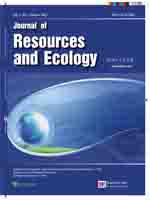Considering energy security and greenhouse gas emission, many governments are developing bio-liquid fuel industries. The Chinese Government advocates the development of a fuel ethanol industry with non-food crops such as cassava. However, scientists debate the carbon emission of these bio-liquid fuels. The focuses are the influence of soil carbon pool destruction and by-product utilization. This study built a carbon balance analysis model, and assessed carbon emission of cassava fuel ethanol across its life cycle. The results show that the carbon emission of cassava fuel ethanol per kilogram in its life cycle was 0.457 kg under new technical conditions and 0.647 kg under old technical conditions. Carbon emission mainly came from the use of nitrogen fertilizer (9% of total emissions), the destruction of the soil carbon pool (29%) and fossil energy inputs (50%). Taking gasoline as a reference, the carbon emission of cassava fuel ethanol was 90% of that of gasoline. This percentage would drop to 64% if soil carbon pool destruction was avoided. Therefore, in order to promote the development of cassava fuel ethanol in China, farms should apply fertilizer properly, grow cassava on marginal land, and not alter land use patterns of woodland, grassland and other environments. In addition, we should exploit efficient fuel ethanol conversion technologies and strengthen the use of by-products.
How to translate text using browser tools
1 March 2012
Carbon Balance of Cassava-Based Ethanol Fuel in China
Yang Hailong,
Lv Yao,
Feng Zhiming
ACCESS THE FULL ARTICLE

Journal of Resources and Ecology
Vol. 3 • No. 1
March 2012
Vol. 3 • No. 1
March 2012
carbon balance analysis
carbon impact
cassava
fuel ethanol
life cycle assessment (LCA)





